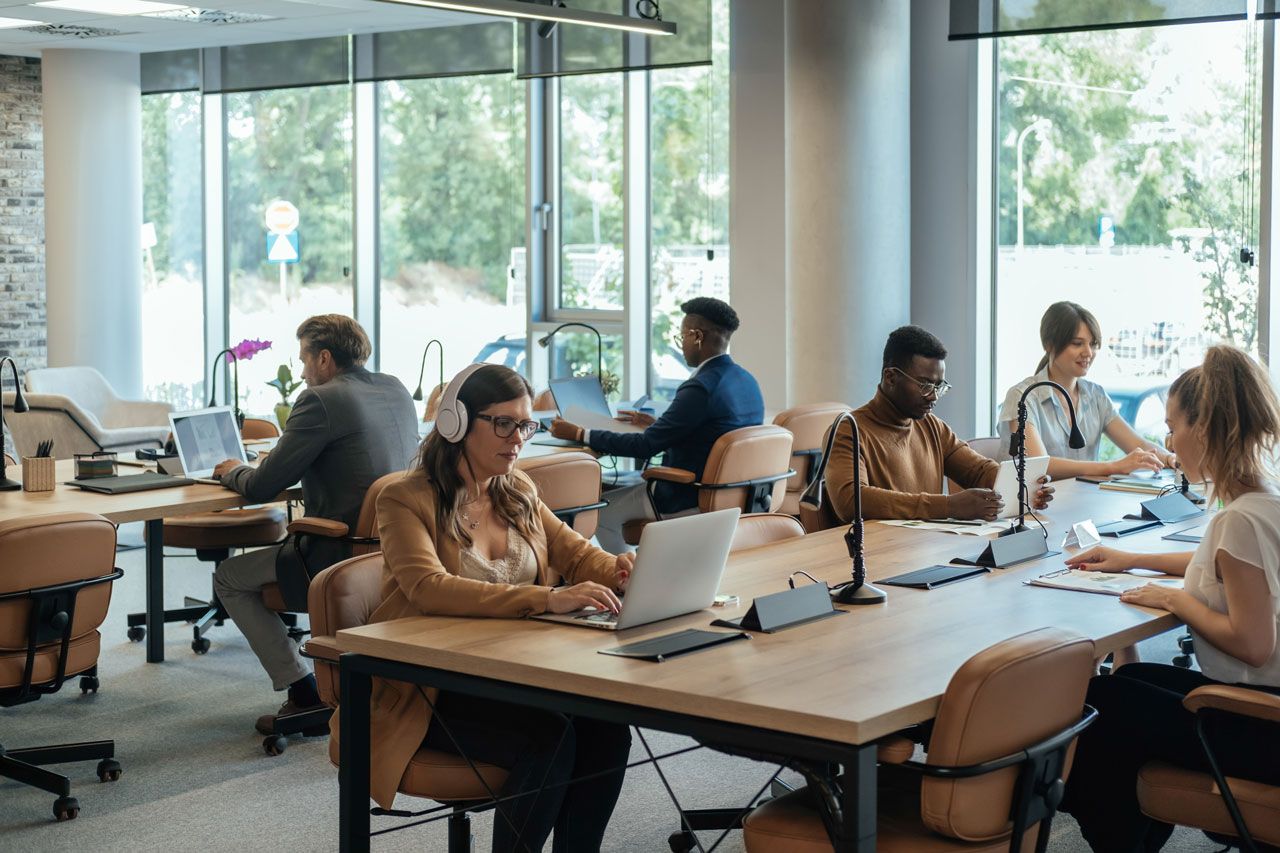The Pros and Cons of 'Hot Desking' in the Office

In recent years, the concept of hot desking has gained significant popularity in office environments, transforming traditional workspaces into dynamic and flexible setups. Hot desking refers to the practice of employees sharing desks on a temporary basis rather than having assigned workstations.
This trend has emerged as a response to the changing nature of work, emphasising collaboration, flexibility, and cost efficiency. However, like any office arrangement, hot desking has its share of advantages and disadvantages. In this blog post, we will explore the pros and cons of hot desking in the office.
Pros of Hot Desking:
Flexibility and Adaptability
One of the most significant advantages of hot desking is the flexibility it offers. Employees have the freedom to choose where they want to work on any given day, whether it's near a window for natural light, closer to a team they are collaborating with, or simply to experience a change in environment. This adaptability can boost creativity and productivity as employees can tailor their workspaces to suit their preferences and current tasks.
Encouraging Collaboration
Hot desking fosters interactions between employees who might not have interacted otherwise. When employees from different departments or teams share the same space, it creates opportunities for spontaneous collaboration and idea exchange. This can lead to enhanced communication and a stronger sense of camaraderie among colleagues.
Cost Efficiency
Hot desking can be a cost-effective solution for companies, especially those with limited office space. By having fewer fixed workstations, businesses can optimise their office space more efficiently, reducing real estate expenses. Moreover, fewer assigned desks mean less equipment and furniture needed, resulting in additional cost savings.
Promotes Mobility and Remote Work
Hot desking aligns with the growing trend of remote work and mobility. With the availability of desk booking systems, employees can reserve a desk in advance or on the go. This encourages a more fluid work style, allowing employees to work from different locations or remotely when needed.
Facilitates Employee Wellness
Offering diverse work environments can positively impact employee well-being. Some individuals might prefer a quieter space to focus, while others thrive in a bustling atmosphere. Hot desking accommodates these preferences and empowers employees to choose their ideal workspace, potentially reducing stress and increasing job satisfaction.
Cons of Hot Desking:
Lack of Personalisation
While hot desking provides flexibility, it also means that employees don't have a dedicated space they can personalise. Personal touches, such as family photos or desk decorations, can create a sense of ownership and belonging in the workplace, which may be lacking in hot desking environments.
Difficulty in Building Relationships
Constantly changing workspaces can make it challenging for employees to establish strong working relationships with their colleagues. In traditional settings, colleagues are often seated close to each other, facilitating communication and bonding. Hot desking, on the other hand, might result in a workforce that's not as connected, which could possibly make it harder for teams to work well together.
Potential for Disorganisation
Without assigned workstations, some employees might not adhere to the same level of organisation they would maintain at a personal desk. This could lead to misplaced documents or equipment, making it difficult for others to locate necessary resources.
Technology and Connectivity Issues
Hot desking relies heavily on technology, such as desk booking systems and cloud-based tools. Any technical glitches or network problems can disrupt the seamless functioning of the hot desking setup, causing inconvenience to employees and potentially leading to a decrease in productivity.
Privacy Concerns
Hot desking may compromise employee privacy as they work in shared spaces. Certain tasks, discussions, or phone calls require confidentiality, which might be difficult to achieve in a bustling hot desking environment. Employees may find it challenging to have sensitive conversations without disrupting others or being overheard.
In conclusion, the concept of 'hot desking' has undoubtedly transformed the modern workplace, offering a dynamic and flexible environment for employees. However, as we've explored the pros and cons of this practice, it becomes evident that finding a balance between its benefits and challenges is essential to maximise productivity and job satisfaction. This is where innovative solutions like desk booking software, such as Clearooms, emerge as the key to overcoming the obstacles associated with hot desking.
On the positive side, hot desking fosters collaboration, encourages adaptability, and optimises space usage. It promotes interactions among employees from different teams, sparking creative ideas and a stronger sense of unity. The flexibility it offers can empower individuals to choose a workspace that suits their tasks, further enhancing their productivity and comfort. However, the potential downsides, such as a lack of personal space and increased stress due to constant adjustments, cannot be ignored.
This is where Clearooms desk booking software steps in as a crucial tool for addressing these challenges. The software provides a streamlined solution to manage reservations and allocations of workspaces. It allows employees to book a desk in advance, ensuring they have a designated spot when they arrive at the office.
This not only alleviates the stress of hunting for a desk but also ensures that teams can sit together when needed, enhancing communication and teamwork. Furthermore, the software can be customised to incorporate preferences, ensuring that individuals with specific needs, such as those requiring quieter spaces, are accommodated.
Furthermore, this desk booking software enables businesses to collect valuable data on space usage patterns, peak hours, and preferred workspaces. This data-driven insight allows for strategic decision-making, from optimising office layouts to determining the need for expansion or downsizing.
In a world where efficiency, employee satisfaction, and well-being are paramount, investing in such technology paves the way for a future of productive, collaborative, and seamlessly managed work environments.
